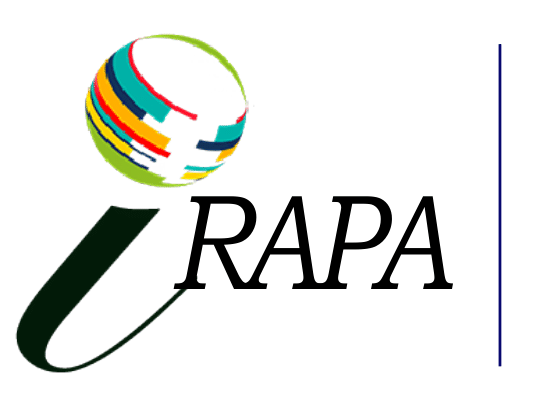In this research, a new method was used to determine the amount of iron in water, by using the colour biosensor of the smart-phone device as a biosensor for the chromatic intensity of the samples images that are examined through a program (colour meter) downloaded to the phone. The concentration of the samples is measured from the value of the basic colours (red, green, blue) (RGB) for recorded video from a device (Galaxy J7 prime 2). An accessory for the mobile device is designed from plastic (black acrylic). In the form of a dark box from the inside equipped with a flow cell and a mirror reflecting the flash light emitted by the mobile device and a green filter complementing the red colour, and a micro switch connected to a smart-phone device via earphones, and the device is attached to the accessory by the device case. The calibration curve for this method was in the range of mg/L (1-8), the correlation coefficient (R2 ) was equal to (0.999), the limit of detection was in the amount of (0.2) mg/L, and the relative standard deviation (RSD%) for the concentration was (4) mg/L, for which the examination was repeated (10) times, and its value was (0.6 %), and the recovery value (Recovery%) was equal to (101.5 %).

- Audet, Y., & Chapman, G. H. (2001, October). Design of a self-correcting active pixel sensor. In Proceedings 2001 IEEE International Symposium on Defect and Fault Tolerance in VLSI Systems (pp. 18-26). IEEE. https://doi.org/10.1109/DFTVS.2001.966748
- Bigas, M., Cabruja, E., Forest, J., & Salvi, J. (2006). Review of CMOS image sensors. Microelectronics Journal, 37(5), 433-451. https://doi.org/10.1016/j.mejo.2005.07.002
- Christodouleas, D. C., Nemiroski, A., Kumar, A. A., & Whitesides, G. M. (2015). Broadly available imaging devices enable high-quality low-cost photometry. Analytical chemistry, 87(18), 9170-9178. https://doi.org/10.1021/acs.analchem.5b01612
- Coulombe, J., Sawan, M., & Wang, C. (2000, May). Variable resolution CMOS current mode active pixel sensor. In 2000 IEEE International Symposium on Circuits and Systems (ISCAS) (Vol. 2, pp. 293-296). IEEE. https://doi.org/10.1109/ISCAS.2000.856319
- Croft, D. (1999). Cmos image sensors compete for low-light tasks. Laser Focus World, 35(1), 135-140.
- Durini, D. (Ed.). (2019). High performance silicon imaging: fundamentals and applications of cmos and ccd sensors. Woodhead Publishing.
- El Gamal, A., Eltoukhy, H., & Sensors, C. I. (2005). IEEE Circuits& Device Magazine, May. June6―20.
- Fossum, E., & Krymski, A. (2000, July). High speed CMOS imaging. In 2000 Digest of the LEOS Summer Topical Meetings. Electronic-Enhanced Optics. Optical Sensing in Semiconductor Manufacturing. Electro-Optics in Space. Broadband Optical Networks (Cat. No. 00TH8497) (pp. I3-I4). IEEE. https://doi.org/10.1109/LEOSST.2000.869673
- Ginhac, D. (2014). Smart cameras on a chip: using complementary metal-oxide-semiconductor (CMOS) image sensors to create smart vision chips. In High Performance Silicon Imaging (pp. 165-188). Woodhead Publishing. https://doi.org/10.1533/9780857097521.1.165
- Goy, J., Courtois, B., Karam, J. M., & Pressecq, F. (2001). Design of an APS CMOS image sensor for low light level applications using standard CMOS technology. Analog Integrated Circuits and Signal Processing, 29(1), 95-104. https://doi.org/10.1023/A:1011286415014
- Haris, D. C. (2003). Determination of Iron with 1, 10-Phenanthroline. Quantitative Chemical Analysis, 6th ed., WH Freeman & Company, New York, 258-261.
- Iqbal, Z., & Eriksson, M. (2013). Classification and quantitative optical analysis of liquid and solid samples using a mobile phone as illumination source and detector. Sensors and Actuators B: Chemical, 185, 354-362. https://doi.org/10.1016/j.snb.2013.05.009
- Koren, I., Chapman, G., & Koren, Z. (2000, October). A self-correcting active pixel camera. In Proceedings IEEE International Symposium on Defect and Fault Tolerance in VLSI Systems (pp. 56-64). IEEE. https://doi.org/10.1109/DFTVS.2000.886974
- Levin, A., & Stevens, P. E. (2014). Summary of KDIGO 2012 CKD Guideline: behind the scenes, need for guidance, and a framework for moving forward. Kidney International, 85(1), 49-61. https://doi.org/10.1038/ki.2013.444
- Marczenko, Z., & Balcerzak, M. (2000). Separation, preconcentration and spectrophotometry in inorganic analysis. Elsevier.
- Roda, A., Michelini, E., Zangheri, M., Di Fusco, M., Calabria, D., & Simoni, P. (2016). Smartphone-based biosensors: A critical review and perspectives. TrAC Trends in Analytical Chemistry, 79, 317-325. https://doi.org/10.1016/j.trac.2015.10.019
- Shcherback, I., & Yadid-Pecht, O. (2003). Photoresponse analysis and pixel shape optimization for CMOS active pixel sensors. IEEE Transactions on Electron Devices, 50(1), 12-18. https://doi.org/10.1109/TED.2002.806966
- Zhang, W., Chan, M., Wang, H., & Ko, P. K. (1999, October). Building hybrid active pixels for CMOS imager on SOI substrate. In 1999 IEEE International SOI Conference. Proceedings (Cat. No. 99CH36345) (pp. 102-103). IEEE. https://doi.org/10.1109/SOI.1999.819873
- Zhou, Z., Pain, B., & Fossum, E. (1998, February). A CMOS imager with on-chip variable resolution for light-adaptive imaging. In 1998 IEEE International Solid-State Circuits Conference. Digest of Technical Papers, ISSCC. First Edition (Cat. No. 98CH36156) (pp. 174-175). IEEE. https://doi.org/10.1109/ISSCC.1998.672422













